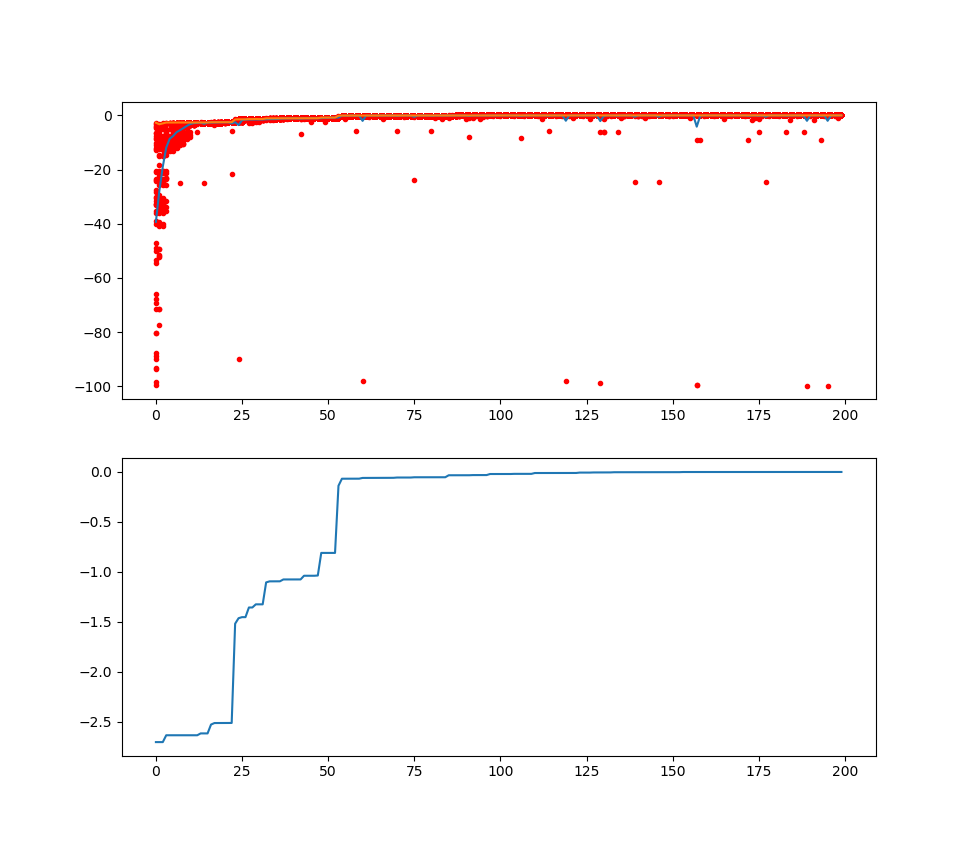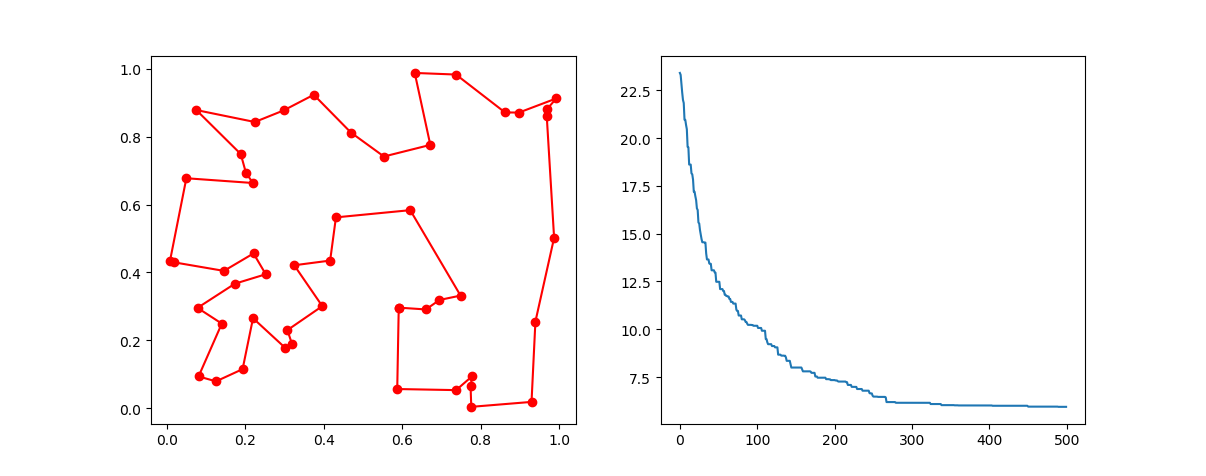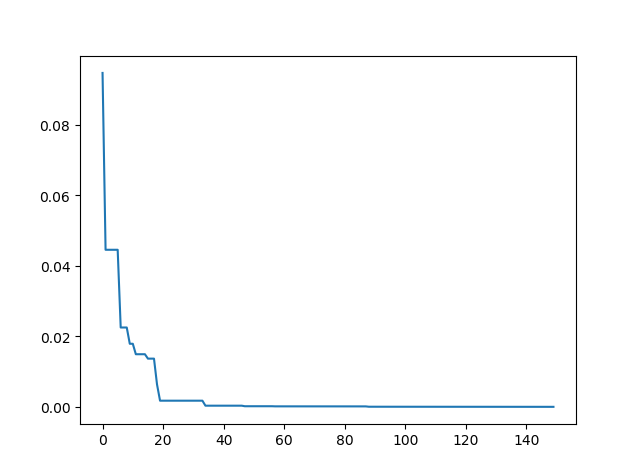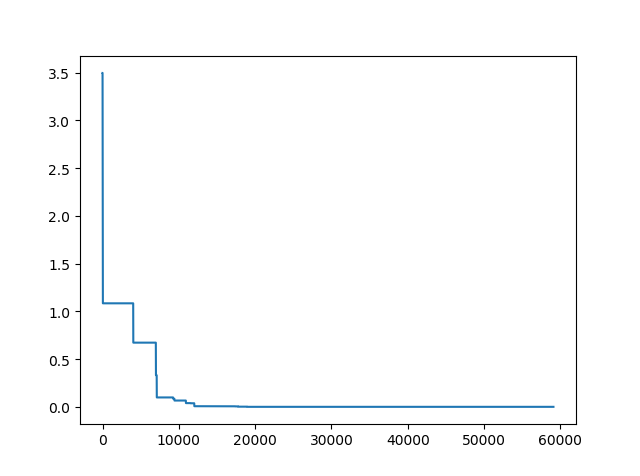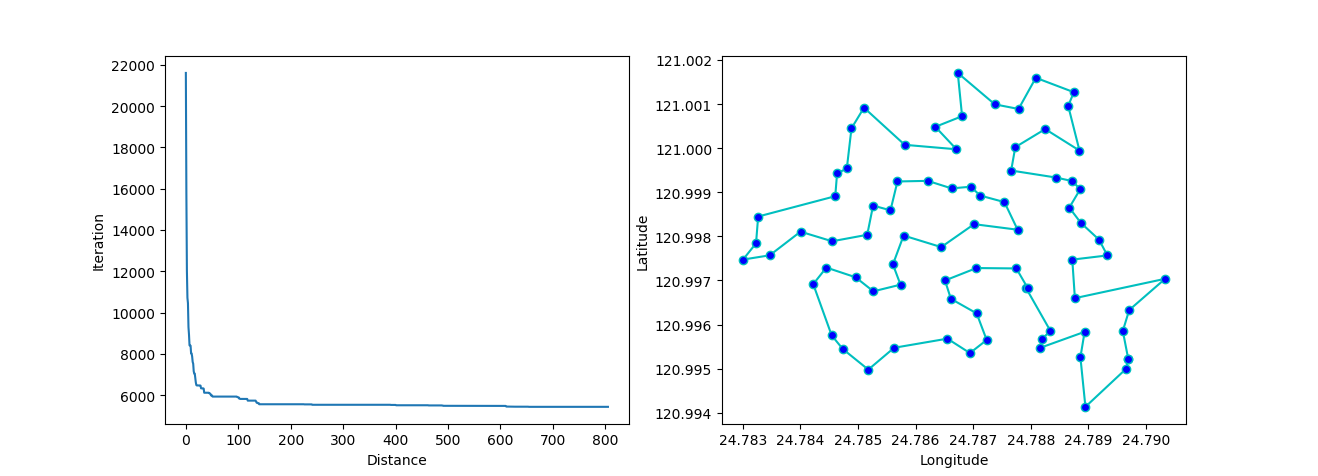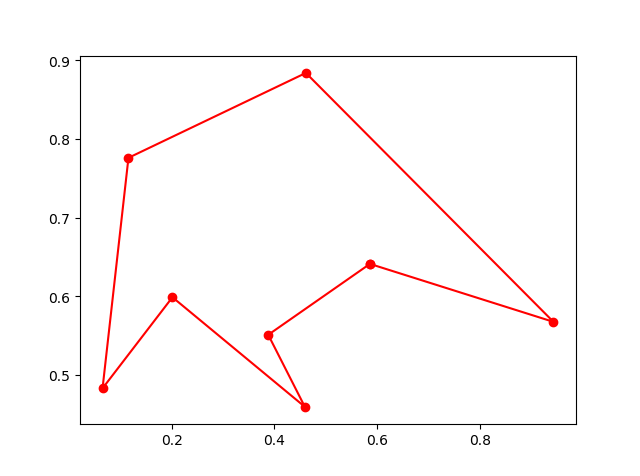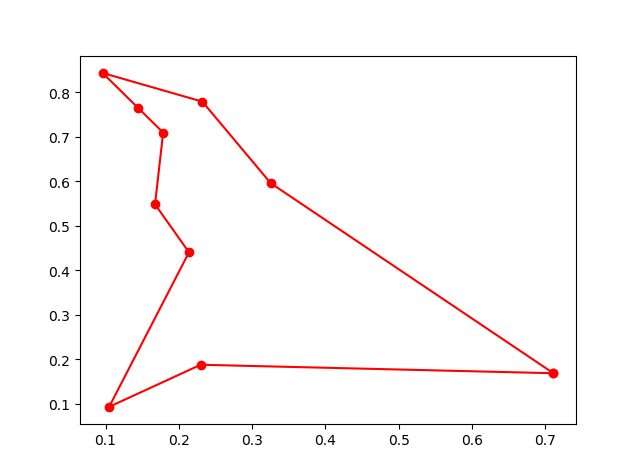Heuristic Algorithms in Python
Project description
scikit-opt
Heuristic Algorithms in Python
(Genetic Algorithm, Particle Swarm Optimization, Simulated Annealing, Ant Colony Algorithm, Immune Algorithm,Artificial Fish Swarm Algorithm in Python)
- Documentation: https://scikit-opt.github.io/scikit-opt/#/docs/en,
- 文档: https://scikit-opt.github.io/scikit-opt/#/docs/zh
install
pip install scikit-opt
News:
All algorithms will be available on TensorFlow/Spark on version 0.4, getting parallel performance.
feature: UDF
UDF (user defined function) is available now!
For example, you just worked out a new type of selection function.
Now, your selection function is like this:
def selection_tournament(self, tourn_size):
FitV = self.FitV
sel_index = []
for i in range(self.size_pop):
aspirants_index = np.random.choice(range(self.size_pop), size=tourn_size)
sel_index.append(max(aspirants_index, key=lambda i: FitV[i]))
self.Chrom = self.Chrom[sel_index, :] # next generation
return self.Chrom
Regist your udf to GA (Here we provide some operators)
from sko.GA import GA, GA_TSP
from sko.GA import ranking_linear, ranking_raw, crossover_2point, selection_roulette_2, mutation
demo_func = lambda x: x[0] ** 2 + (x[1] - 0.05) ** 2 + x[2] ** 2
ga = GA(func=demo_func, n_dim=3, size_pop=100, max_iter=500, lb=[-1, -10, -5], ub=[2, 10, 2])
#
ga.register(operator_name='ranking', operator=ranking_linear). \
register(operator_name='crossover', operator=crossover_2point). \
register(operator_name='mutation', operator=mutation). \
register(operator_name='selection', operator=selection_tournament, tourn_size=3)
Now do GA as usual
best_x, best_y = ga.run()
print('best_x:', best_x, '\n', 'best_y:', best_y)
Until Now, the udf surport
crossover,mutation,selection,rankingof GA
We provide a dozen of operators see here
demo
1. Genetic Algorithm
from sko.GA import GA
def demo_func(x):
x1, x2, x3 = x
return x1 ** 2 + (x2 - 0.05) ** 2 + x3 ** 2
ga = GA(func=demo_func, lb=[-1, -10, -5], ub=[2, 10, 2], max_iter=500)
best_x, best_y = ga.fit()
plot the result using matplotlib:
import pandas as pd
import matplotlib.pyplot as plt
Y_history = ga.all_history_Y
Y_history = pd.DataFrame(Y_history)
fig, ax = plt.subplots(3, 1)
ax[0].plot(Y_history.index, Y_history.values, '.', color='red')
plt_mean = Y_history.mean(axis=1)
plt_max = Y_history.min(axis=1)
ax[1].plot(plt_mean.index, plt_mean, label='mean')
ax[1].plot(plt_max.index, plt_max, label='min')
ax[1].set_title('mean and all Y of every generation')
ax[1].legend()
ax[2].plot(plt_max.index, plt_max.cummin())
ax[2].set_title('best fitness of every generation')
plt.show()
1.1 Genetic Algorithm for TSP(Travelling Salesman Problem)
Just import the GA_TSP, it overloads the crossover, mutation to solve the TSP
Firstly, your data (the distance matrix). Here I generate the data randomly as a demo:
import numpy as np
num_points = 8
points = range(num_points)
points_coordinate = np.random.rand(num_points, 2)
distance_matrix = np.zeros(shape=(num_points, num_points))
for i in range(num_points):
for j in range(num_points):
distance_matrix[i][j] = np.linalg.norm(points_coordinate[i] - points_coordinate[j], ord=2)
print('distance_matrix is: \n', distance_matrix)
def cal_total_distance(points):
num_points, = points.shape
total_distance = 0
for i in range(num_points - 1):
total_distance += distance_matrix[points[i], points[i + 1]]
total_distance += distance_matrix[points[i + 1], points[0]]
return total_distance
Do GA
from sko.GA import GA_TSP
ga_tsp = GA_TSP(func=cal_total_distance, points=points, pop=50, max_iter=200, Pm=0.001)
best_points, best_distance = ga_tsp.fit()
Plot the result:
fig, ax = plt.subplots(1, 1)
best_points_ = np.concatenate([best_points, [best_points[0]]])
best_points_coordinate = points_coordinate[best_points_, :]
ax.plot(best_points_coordinate[:, 0], best_points_coordinate[:, 1],'o-r')
plt.show()
2. PSO(Particle swarm optimization)
def demo_func(x):
x1, x2, x3 = x
return x1 ** 2 + (x2 - 0.05) ** 2 + x3 ** 2
from sko.PSO import PSO
pso = PSO(func=demo_func, dim=3)
fitness = pso.fit()
print('best_x is ',pso.gbest_x)
print('best_y is ',pso.gbest_y)
pso.plot_history()
3. SA(Simulated Annealing)
def demo_func(x):
x1, x2, x3 = x
return x1 ** 2 + (x2 - 0.05) ** 2 + x3 ** 2
from sko.SA import SA
sa = SA(func=demo_func, x0=[1, 1, 1])
x_star, y_star = sa.fit()
print(x_star, y_star)
import matplotlib.pyplot as plt
import pandas as pd
plt.plot(pd.DataFrame(sa.f_list).cummin(axis=0))
plt.show()
3.1 SA for TSP
Firstly, your data (the distance matrix). Here I generate the data randomly as a demo (find it in GA for TSP above)
DO SA for TSP
from sko.SA import SA_TSP
sa_tsp = SA_TSP(func=demo_func, x0=range(num_points))
best_points, best_distance = sa_tsp.fit()
plot the result
fig, ax = plt.subplots(1, 1)
best_points_ = np.concatenate([best_points, [best_points[0]]])
best_points_coordinate = points_coordinate[best_points_, :]
ax.plot(best_points_coordinate[:, 0], best_points_coordinate[:, 1], 'o-r')
plt.show()
4. ASA for tsp (Ant Colony Algorithm)
aca = ACA_TSP(func=cal_total_distance, n_dim=8,
size_pop=10, max_iter=20,
distance_matrix=distance_matrix)
best_x, best_y = aca.fit()
5. immune algorithm (IA)
from sko.IA import IA_TSP_g as IA_TSP
ia_tsp = IA_TSP(func=cal_total_distance, n_dim=num_points, pop=500, max_iter=2000, Pm=0.2,
T=0.7, alpha=0.95)
best_points, best_distance = ia_tsp.fit()
print('best routine:', best_points, 'best_distance:', best_distance)
6. artificial fish swarm algorithm (AFSA)
def func(x):
x1, x2 = x
return 1 / x1 ** 2 + x1 ** 2 + 1 / x2 ** 2 + x2 ** 2
from sko.ASFA import ASFA
asfa = ASFA(func, n_dim=2, size_pop=50, max_iter=300,
max_try_num=100, step=0.5, visual=0.3,
q=0.98, delta=0.5)
best_x, best_y = asfa.fit()
print(best_x, best_y)
Project details
Release history Release notifications | RSS feed
Download files
Download the file for your platform. If you're not sure which to choose, learn more about installing packages.
Source Distribution
Built Distribution
Hashes for scikit_opt-0.3.2-py3-none-any.whl
| Algorithm | Hash digest | |
|---|---|---|
| SHA256 | ab71d546999cfeb158da3aaa014e76d3f77015ce21fc9017e16d0bc8da91e9fb |
|
| MD5 | 6bccc9cc01544373b66a14210c6e19b1 |
|
| BLAKE2b-256 | d944f31102fcc5d416e669d5c119f541566f97ea429ddbe62f2f76bce327edbd |





